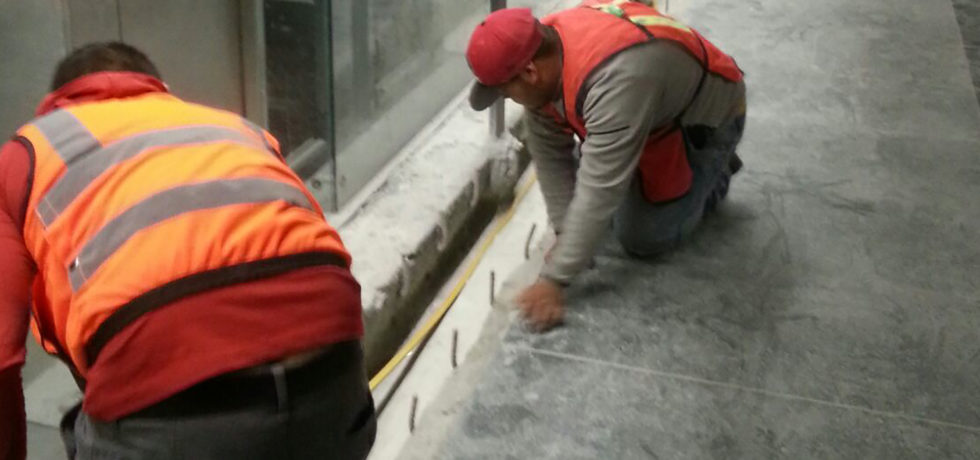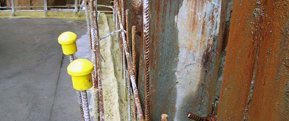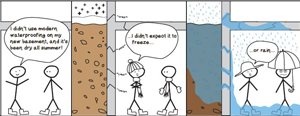Category
- Concrete Technology
One of the technologies used in waterproofing joints is through a PVC Waterstop, also known as the traditional ‘dumbbell’ due to its shape. These plastic sheets are placed across the joint before the concrete is poured to create a physical barrier to block water penetration. This particular type of waterstop relies on the ribs in the design to prevent water from passing through the joint.
The PVC waterstop is great for blocking water and relatively inexpensive, but does have limitations:
- Improper compaction around the waterstop results in a high probability of honeycombing;
- Concrete shrinkage leads to small gaps between the PVC and concrete; and
- PVC as a material does not bond well to concrete and is tedious to install.
The issues create instances where water leakage can exist. In fact, PVC waterstops bend while concrete is poured, forming a tunnel and area where water can infiltrate. This is not to say that PVC is not an effect waterstop product; however, leaking joints and details in structures the world over suggest there is a more efficient waterstop out there.
It is not necessarily the fact the waterstop is not working in this instance, but instead an error in the installation or proper concrete compaction is occurring leading to leakages. To make matters worse, once the damage has been done, it is virtually impossible to recognize a problem until the joint begins to leak.
Currently, more advanced and economical waterstops and materials for joints have been developed. One of these waterstops is Krytonite Swelling Waterstop. Made from a synthetic rubber material, Krytonite can stop water in the joint under hydrostatic water pressure. Instead of creating a physical barrier like the PVC waterstop, Krytonite uses swelling pressure to seal a concrete construction joint and block the flow of water.
Unlike PVC, Krytonite is flexible and easy to install in the construction joint using Krytonite Adhesive. Further, Krytonite’s innovative trapezoid shape not only resists dislodgement but allows for better concrete compaction. And even without, the waterstop compensates for bad compaction through its increased swelling capacity; something PVC has no way of doing as it is used solely as a physical barrier.
With construction joints and details the most likely area for concrete leakages, incorporating the proper waterstop is of the utmost importance.







